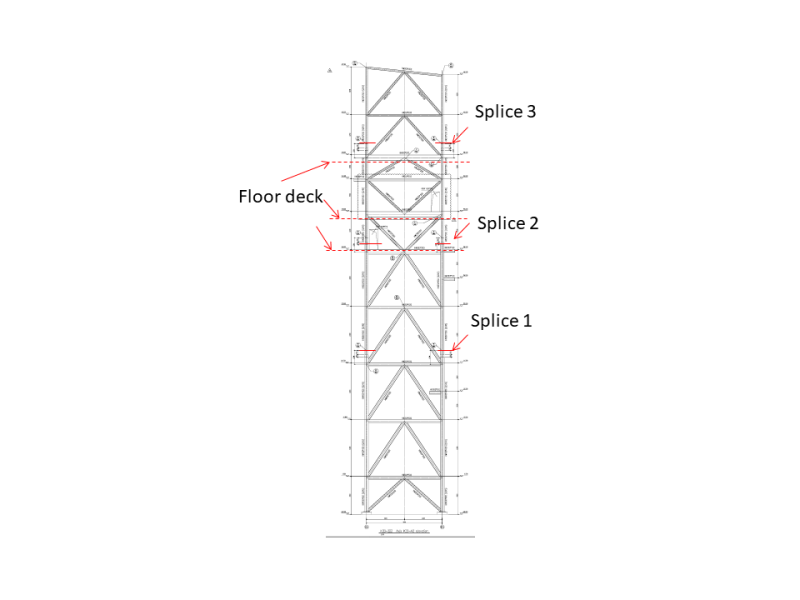Hi everyone.
First of all I would like to say that I don’t have much experience in working on site as I am more of a Structural Engineer. However, I am tasked to check verticality (erection) deviations of steel columns with splice connections. The structure is a cement plant tension tower appr. 47m tall and has three ‘floors’ and edge beams at every 6 to 3 m from bottom to top. Pease see picture below.
1. I was advised to check deviations at every splice (three per column) with limit 1/1000 and with reference at the base of the column. Code of practice (Eurocode) says to check deviations at one storey in relation to storey below or deviations at one storey in relation to column base. Now, my structure is somehow different from a regular building and eurocode does not say anything in regard what I was advised to do ( deviation at splices from bottom of the column)
As it seems reasonable to me to check it at the splice connections , will I check deviations at the second and third splice with reference to the base of the column also with 1/1000 limit (doesn’t seem likely)??? Any idea how to approach it and what limit to use? Or maybe completely change the approach?
2. How do I allow for manufacturing imperfections? How will I ‘pluck it in’ the allowable limit?
3. I will use theodolite to check deviations. I was also advised to get coordinates of the column at the bottom and at the splice and then get the difference. But how will I convert it to millimetres ??
Thank you!!

First of all I would like to say that I don’t have much experience in working on site as I am more of a Structural Engineer. However, I am tasked to check verticality (erection) deviations of steel columns with splice connections. The structure is a cement plant tension tower appr. 47m tall and has three ‘floors’ and edge beams at every 6 to 3 m from bottom to top. Pease see picture below.
1. I was advised to check deviations at every splice (three per column) with limit 1/1000 and with reference at the base of the column. Code of practice (Eurocode) says to check deviations at one storey in relation to storey below or deviations at one storey in relation to column base. Now, my structure is somehow different from a regular building and eurocode does not say anything in regard what I was advised to do ( deviation at splices from bottom of the column)
As it seems reasonable to me to check it at the splice connections , will I check deviations at the second and third splice with reference to the base of the column also with 1/1000 limit (doesn’t seem likely)??? Any idea how to approach it and what limit to use? Or maybe completely change the approach?
2. How do I allow for manufacturing imperfections? How will I ‘pluck it in’ the allowable limit?
3. I will use theodolite to check deviations. I was also advised to get coordinates of the column at the bottom and at the splice and then get the difference. But how will I convert it to millimetres ??
Thank you!!

